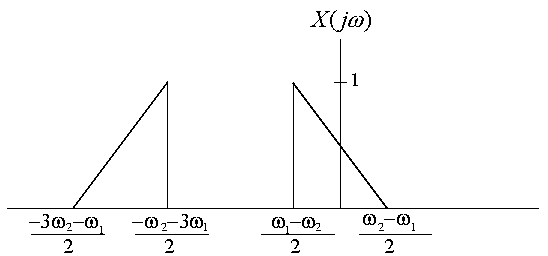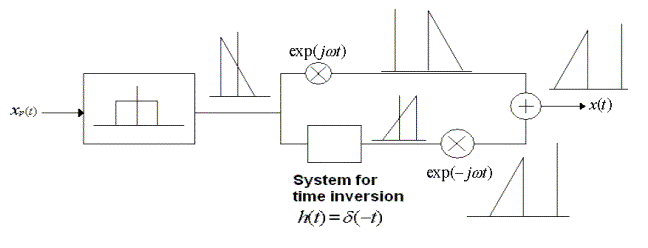Solution 4
(a)
Multiplication by the complex exponential  in the time domain is equivalent to shifting left the Fourier transform by
an amount ' in the time domain is equivalent to shifting left the Fourier transform by
an amount '  ' in the frequency domain. Therefore, the resultant transform looks as shown below: ' in the frequency domain. Therefore, the resultant transform looks as shown below:

After passing through the filter, the Fourier transform becomes:

Now sampling the signal amounts to making copies of the Fourier Transform, the center of each separated from the other by the sampling frequency in the frequency domain. Thus  has the following form (assuming that the sampling frequency is large enough to avoid overlapping between the copies): has the following form (assuming that the sampling frequency is large enough to avoid overlapping between the copies):
 
(b)  is recoverable from is recoverable from  only if the copies of the Fourier Transform obtained by sampling do not overlap with each other. For this to happen, the condition set down by the Shannon-Nyquist Sampling Theorem for a band-limited signal has to be satisfied, i.e. the sampling frequency should be greater than twice the bandwidth of the original signal. Mathematically, only if the copies of the Fourier Transform obtained by sampling do not overlap with each other. For this to happen, the condition set down by the Shannon-Nyquist Sampling Theorem for a band-limited signal has to be satisfied, i.e. the sampling frequency should be greater than twice the bandwidth of the original signal. Mathematically,



Hence, the maximum sampling period for  to be recoverable from to be recoverable from  is is  . . 
(c) The system to recover  from from  is outlined below : is outlined below :


|